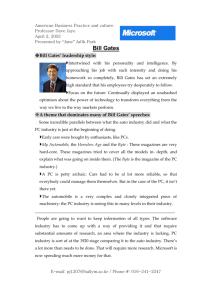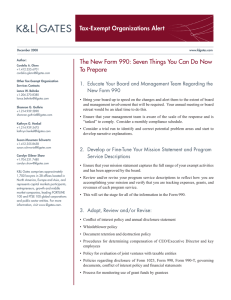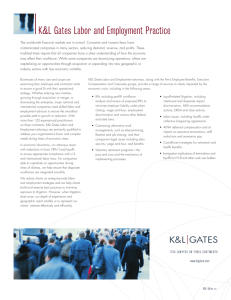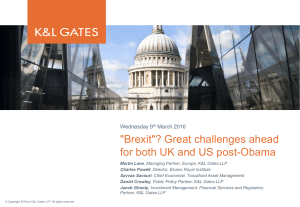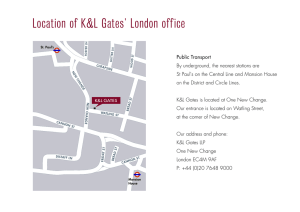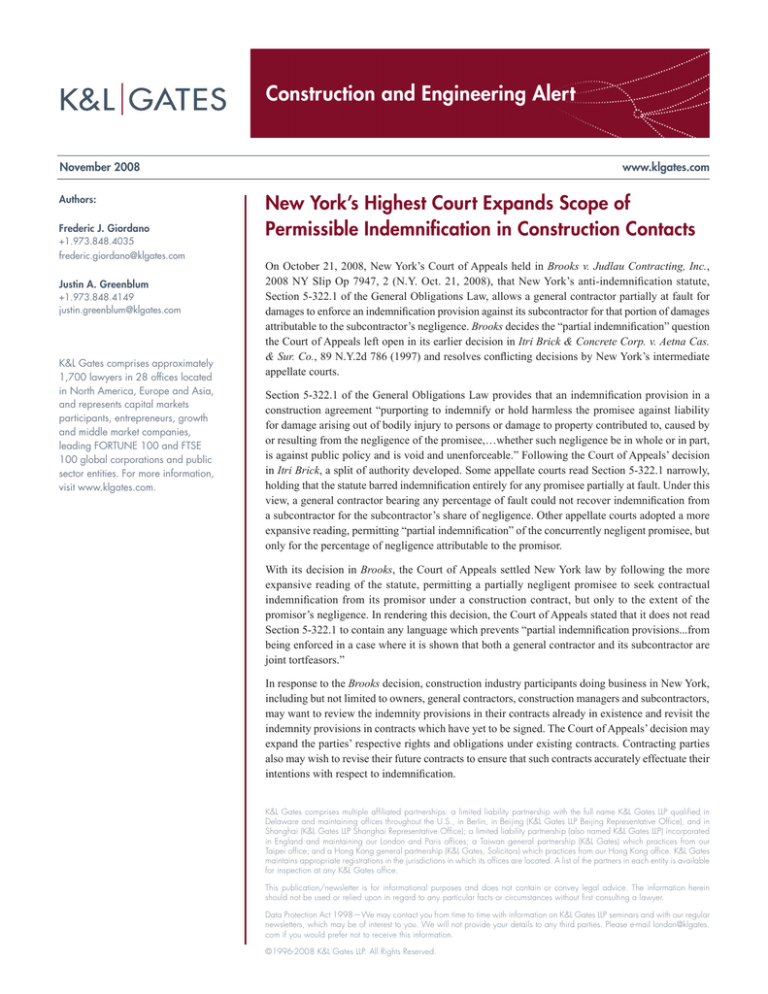
Construction and Engineering Alert
November 2008
Authors:
Frederic J. Giordano
+1.973.848.4035
frederic.giordano@klgates.com
Justin A. Greenblum
+1.973.848.4149
justin.greenblum@klgates.com
K&L Gates comprises approximately
1,700 lawyers in 28 offices located
in North America, Europe and Asia,
and represents capital markets
participants, entrepreneurs, growth
and middle market companies,
leading FORTUNE 100 and FTSE
100 global corporations and public
sector entities. For more information,
visit www.klgates.com.
www.klgates.com
New York’s Highest Court Expands Scope of
Permissible Indemnification in Construction Contacts
On October 21, 2008, New York’s Court of Appeals held in Brooks v. Judlau Contracting, Inc.,
2008 NY Slip Op 7947, 2 (N.Y. Oct. 21, 2008), that New York’s anti-indemnification statute,
Section 5-322.1 of the General Obligations Law, allows a general contractor partially at fault for
damages to enforce an indemnification provision against its subcontractor for that portion of damages
attributable to the subcontractor’s negligence. Brooks decides the “partial indemnification” question
the Court of Appeals left open in its earlier decision in Itri Brick & Concrete Corp. v. Aetna Cas.
& Sur. Co., 89 N.Y.2d 786 (1997) and resolves conflicting decisions by New York’s intermediate
appellate courts.
Section 5-322.1 of the General Obligations Law provides that an indemnification provision in a
construction agreement “purporting to indemnify or hold harmless the promisee against liability
for damage arising out of bodily injury to persons or damage to property contributed to, caused by
or resulting from the negligence of the promisee,…whether such negligence be in whole or in part,
is against public policy and is void and unenforceable.” Following the Court of Appeals’ decision
in Itri Brick, a split of authority developed. Some appellate courts read Section 5-322.1 narrowly,
holding that the statute barred indemnification entirely for any promisee partially at fault. Under this
view, a general contractor bearing any percentage of fault could not recover indemnification from
a subcontractor for the subcontractor’s share of negligence. Other appellate courts adopted a more
expansive reading, permitting “partial indemnification” of the concurrently negligent promisee, but
only for the percentage of negligence attributable to the promisor.
With its decision in Brooks, the Court of Appeals settled New York law by following the more
expansive reading of the statute, permitting a partially negligent promisee to seek contractual
indemnification from its promisor under a construction contract, but only to the extent of the
promisor’s negligence. In rendering this decision, the Court of Appeals stated that it does not read
Section 5-322.1 to contain any language which prevents “partial indemnification provisions...from
being enforced in a case where it is shown that both a general contractor and its subcontractor are
joint tortfeasors.”
In response to the Brooks decision, construction industry participants doing business in New York,
including but not limited to owners, general contractors, construction managers and subcontractors,
may want to review the indemnity provisions in their contracts already in existence and revisit the
indemnity provisions in contracts which have yet to be signed. The Court of Appeals’ decision may
expand the parties’ respective rights and obligations under existing contracts. Contracting parties
also may wish to revise their future contracts to ensure that such contracts accurately effectuate their
intentions with respect to indemnification.
K&L Gates comprises multiple affiliated partnerships: a limited liability partnership with the full name K&L Gates LLP qualified in
Delaware and maintaining offices throughout the U.S., in Berlin, in Beijing (K&L Gates LLP Beijing Representative Office), and in
Shanghai (K&L Gates LLP Shanghai Representative Office); a limited liability partnership (also named K&L Gates LLP) incorporated
in England and maintaining our London and Paris offices; a Taiwan general partnership (K&L Gates) which practices from our
Taipei office; and a Hong Kong general partnership (K&L Gates, Solicitors) which practices from our Hong Kong office. K&L Gates
maintains appropriate registrations in the jurisdictions in which its offices are located. A list of the partners in each entity is available
for inspection at any K&L Gates office.
This publication/newsletter is for informational purposes and does not contain or convey legal advice. The information herein
should not be used or relied upon in regard to any particular facts or circumstances without first consulting a lawyer.
Data Protection Act 1998—We may contact you from time to time with information on K&L Gates LLP seminars and with our regular
newsletters, which may be of interest to you. We will not provide your details to any third parties. Please e-mail london@klgates.
com if you would prefer not to receive this information.
©1996-2008 K&L Gates LLP. All Rights Reserved.


